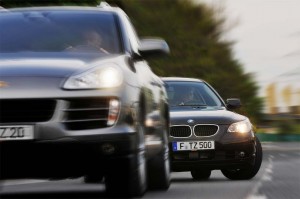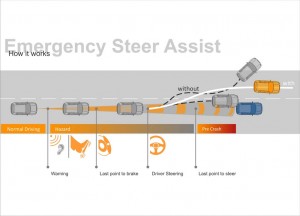The US auto market is finally bouncing back – at least in the eyes of Samir Salman, CEO of Continental’s North American Automotive operations. And that could be good news for suppliers hoping to find a market for next-generation safety technology, he says.
“We initially thought the rebound that we’re seeing now might have taken three to four years,” Salman said, “but the current 11.5-million unit production level is encouraging.”
While discussing new technologies that Continental has ready for production, Salman said that he expects the rebound to continue into 2011 with 12.5 – 13 million units produced.
“Compared to 2009 sales of 8.5 million, things are looking pretty good, but we’ve got a long way to go. We expect that sustainable sales of 15 – 16 million units are possible in the next three to five years.”
TheDetroitBureau.com had the opportunity to speak with Salman as Continental showed American and European journalists new safety-related products from three of the supplier’s divisions; Chassis and Safety, Powertrain and Interior. (Continental’s tire operations, the highest-grossing in the group, were not included.)
Touring the German maker’s facilities, executives focused on macro trends in the automotive industry including;
- Safer driving;
- More environmentally friendly vehicles;
- Higher quality, more affordable vehicles;
A key enabler within the mega-trend of vehicle safety is the integration of once-independent sub-systems to deliver dramatically enhanced performance.
One such example is a new feature Conti expects to have in the market in two to four years, dubbed Emergency Steer Assist, which could make it steer out of trouble in the event of a likely collision. ESA is made possible by hardware developed for other uses, including;
- Active cruise control
- Anti-lock brakes
- Electronic stability control
- Advanced collision warning
- Electric power assisted steering (EPAS)
What’s critical about ESA is how all of these once-separate components or systems can be integrated to work together. The test vehicle was a new BMW 5-Series equipped with standard EPAS and optional automatic cruise control plus electronically adjustable suspension.
The BMW’s forward looking radar (a new 77 Ghz system) has the primary function of enabling the BMW’s automatic cruise control, but its “vision” makes it possible for the car to be better prepared for an emergency evasive maneuver.
As the ESA-equipped 5-Series approaches an obstacle, the radar feeds information to the chassis computer that calculates closing rates and the likelihood of an impending evasive maneuver or accident. This information is already used for advanced collision warning and emergency brake assist features.
Conti’s prototype ESA adds an additional chassis function by stiffening the suspension in advance of any body yaw to provide quicker handling responses. As important, the computer adds torque assist to the steering wheel to transparently encourage the driver to steer around the obstacle.
Continental engineers pointed out that it is often still possible to steer around an obstacle even when it is impossible to stop before hitting the same obstacle. This makes emergency steering a driver’s last best hope to avoid an accident.
The demonstration was held on a small test track in Frankfurt. The exercise consisted of driving toward a rubber target vehicle at speeds starting at 40 kph with the system on and off, with speeds increasing to 80 kph.
Even with the system off, the BMW 5-Series is a fine handing machine. But with the system engaged, the magnitude of additional control and response was on the same order of moving to a car with electronic stability control from one without.
The Conti engineer had the ability to switch the system on and off, and he could change the ESA’s level of response, enabling us to do A-B-C-D testing that clearly showed the system’s effectiveness. The steering torque boost made the last-second emergency lane change almost easy as compared to being seriously scary with the ESA turned off.
Due to the level of individual components required to make ESA possible, the feature will debut in luxury cars first – as did virtually all of today’s advanced safety systems, from anti-lock brakes, or ABS, to electronica stability control. The betting pool starts now with the most likely candidates being current Continental customers like Volvo, BMW, Mercedes, Audi and Volkswagen.


